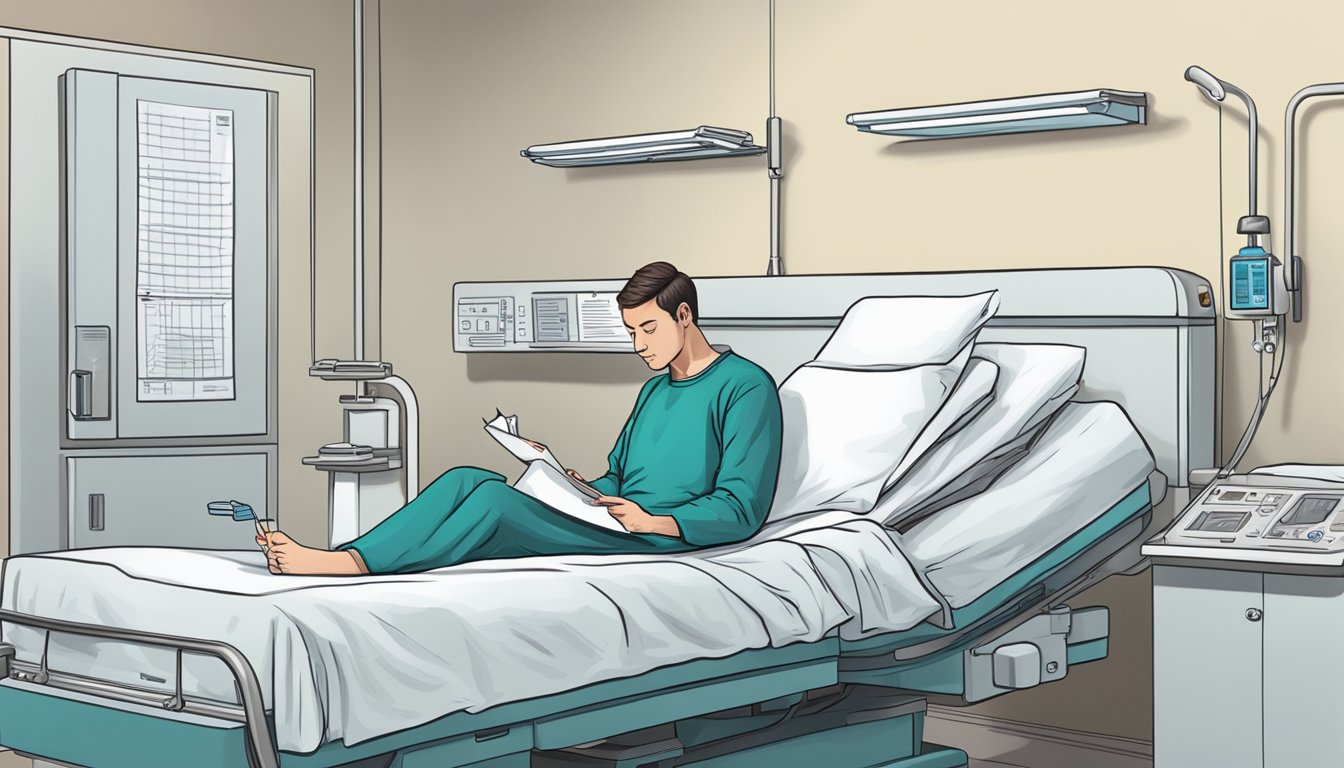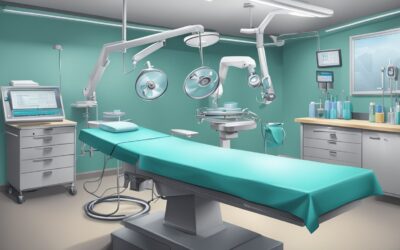Hemorrhoid banding is a minimally invasive outpatient procedure commonly used to treat hemorrhoids, which are swollen blood vessels in the rectal or anal area. During the procedure, small rubber bands are placed around the base of the hemorrhoids, cutting off their blood supply and causing them to shrink and eventually fall off.
This procedure offers several benefits, such as reducing discomfort, controlling bleeding, and improving overall quality of life for those suffering from hemorrhoids. However, it is important to understand that successful recovery from hemorrhoid banding requires careful preparation and post-procedure care.
One crucial aspect of this preparation involves creating a comfortable environment within your home that promotes healing and minimizes potential complications. In this article, we will delve into the various aspects of preparing your home for recovery after hemorrhoid banding.
Creating a Comfortable Recovery Space
Selecting a Suitable Room for Recovery
When preparing your home for recovery after hemorrhoid banding, it is crucial to choose a suitable room that promotes privacy, accessibility, and relaxation. Consider selecting a room on the ground floor if possible, especially if stairs pose a challenge during the recovery period.
This will ensure that you can move around with ease and minimize discomfort. Additionally, opt for a room with ample space to accommodate any necessary medical equipment or supplies.
Considerations for Privacy and Accessibility
Privacy is paramount when recovering from hemorrhoid banding, as it allows you to focus on healing without unnecessary distractions or disruptions. Choose a room that offers seclusion from the rest of your household members, ensuring you have peace and quiet when needed. If available, select a room with its own en-suite bathroom to maintain your privacy during frequent trips to relieve yourself.
Ensuring Proximity to Bathroom Facilities
One of the most critical aspects of creating an ideal recovery space is ensuring easy access to bathroom facilities. After hemorrhoid banding, it is common to experience an increased frequency of bowel movements or the need for immediate relief.
Choose a room in close proximity to the bathroom, allowing you to reach it quickly and conveniently whenever needed. Having the bathroom nearby will alleviate stress and reduce discomfort during this crucial healing phase.
Arranging Comfortable Seating Options
During your recovery period after hemorrhoid banding, comfortable seating plays an essential role in minimizing pain and promoting relaxation. Opt for a supportive chair or cushioned surface that provides ample back support while alleviating pressure on your lower body region where the procedure took place. Consider using ergonomic chairs designed specifically for individuals recovering from medical procedures like hemorrhoid banding.
Choosing a Supportive Chair or Cushioned Surface
Selecting the right chair or surface for recovery is crucial to ensure maximum comfort. Look for chairs with features such as adjustable backrests, lumbar support, and cushioned seats to alleviate pressure points and provide optimal comfort.
Additionally, consider using specialized inflatable donut cushions that assist in reducing pressure on the affected area while sitting. These cushions are designed specifically for individuals recovering from hemorrhoid banding, allowing for pain relief and ensuring a comfortable recovery experience.
Adding Extra Pillows for Added Comfort
Enhancing your seating area with extra pillows can significantly improve your overall comfort during recovery. Place additional pillows strategically to provide support and relieve pressure on the surgical site or affected area. Prop pillows behind your back or under your legs to elevate them if needed.
This elevation helps reduce swelling and promotes blood circulation, further aiding in the healing process. Remember to choose soft, hypoallergenic pillows that offer adequate support without causing discomfort or irritation.
Creating a comfortable recovery space by selecting a suitable room with privacy, accessibility, and proximity to bathroom facilities is essential after undergoing hemorrhoid banding. Accompanied by supportive seating options such as chairs with lumbar support or inflatable donut cushions and added pillows for extra comfort, you can ensure an atmosphere conducive to healing during this sensitive time of recovery.
Stocking Essential Supplies
Medications and Pain Relief Options
When preparing your home for recovery after hemorrhoid banding, it is crucial to have a well-stocked supply of medications and pain relief options. Firstly, consult with your healthcare provider to ensure you have any prescribed medications on hand. These may include painkillers specifically tailored for post-procedure discomfort or any other specialized medication they recommend.
In addition to prescription medications, it is wise to have over-the-counter pain relievers readily available, such as ibuprofen or acetaminophen. These can help alleviate pain and reduce inflammation during your recovery period.
Hemorrhoid Care Products
To aid in the healing process and alleviate symptoms associated with hemorrhoid banding, stocking appropriate hemorrhoid care products is essential. Consider including stool softeners in your supply list as they can help ease bowel movements, reducing strain on the affected area.
Additionally, topical creams or ointments specifically designed for hemorrhoid relief should be included in your supplies. These products provide soothing effects and can help alleviate discomfort by reducing itching, inflammation, and swelling.
Hygiene Supplies
Maintaining proper hygiene during recovery is vital for preventing infections and promoting healing after hemorrhoid banding surgery. Gentle wipes or moistened toilet paper should be included in your stockpile to ensure proper cleaning of the affected area without causing further irritation. It’s important to avoid abrasive wiping techniques that could exacerbate discomfort or cause bleeding.
Additionally, consider investing in a sitz bath kit or basin for warm water soaks—a technique recommended by many medical professionals to soothe discomfort and promote healing after the procedure. The warm water helps improve blood circulation while reducing inflammation and providing overall relief.
By thoughtfully stocking these essential supplies such as medications, pain relief options like ibuprofen or acetaminophen, hemorrhoid care products, and proper hygiene supplies like gentle wipes or moistened toilet paper and sitz bath kits, you will be better prepared to manage your recovery after hemorrhoid banding effectively. These supplies will not only alleviate discomfort but also promote healing and ensure a smoother recovery process.
Modifying Your Diet
High-fiber foods Consuming a diet rich in high-fiber foods is crucial for promoting regular bowel movements and preventing constipation during your recovery from hemorrhoid banding. Incorporating fruits, vegetables, whole grains, and legumes into your meals will provide you with the necessary fiber content. Fruits such as apples, berries, and oranges are excellent sources of insoluble fiber, which adds bulk to stool and aids in its smooth passage through the intestines. Vegetables like broccoli, spinach, and Brussels sprouts are high in soluble fiber that helps soften stool and ease bowel movements. Additionally, whole grain products like oats, brown rice, and whole wheat bread are rich in fiber that promotes a healthy digestive system. Legumes such as lentils, chickpeas, and black beans provide a significant amount of dietary fiber while offering plant-based protein.
Adequate hydration Maintaining proper hydration plays a crucial role in preventing constipation post-hemorrhoid banding surgery. Drinking an adequate amount of water throughout the day is essential for softening stools and facilitating their passage without straining or discomfort. Aim to consume at least eight glasses of water daily to keep your body hydrated and promote regularity in bowel movements. By staying well-hydrated, you support the body’s natural digestive processes and ensure smooth transportation of waste through the intestines. It is important to note that beverages like alcohol and caffeine have diuretic effects that can dehydrate the body if consumed excessively or regularly during recovery; hence it is advisable to limit their intake or avoid them altogether until after your healing process has completed. By modifying your diet to include high-fiber foods along with consuming adequate amounts of water while avoiding dehydrating substances such as alcohol or caffeine-containing beverages during your recovery from hemorrhoid banding, you can effectively promote healthy digestion and minimize the risk of constipation or discomfort.
Maintaining Good Hygiene Practices
After undergoing hemorrhoid banding, it is crucial to maintain proper hygiene practices to promote healing and prevent any complications. Paying attention to your cleansing techniques after bowel movements can go a long way in ensuring comfort and minimizing irritation.
Proper Cleansing Techniques after Bowel Movements
When it comes to cleaning the affected area after using the bathroom, it is essential to be gentle and avoid any harsh motions that may aggravate the healing process. Instead of wiping vigorously, opt for a gentler approach by patting the area with soft toilet paper or using moistened wipes specifically designed for sensitive skin. This helps to minimize friction and reduce the risk of irritation or re-injury.
Conclusion
Preparing your home for recovery after hemorrhoid banding is a vital step towards a smooth healing process. By creating a comfortable recovery space, stocking essential supplies, modifying your diet, and maintaining good hygiene practices, you can ensure optimal comfort during this time.
Remember that while hemorrhoid banding recovery may present some temporary challenges, it is important to stay positive and maintain self-care routines rigorously. With patience and proper care, you will soon embark on a path towards complete recuperation.




